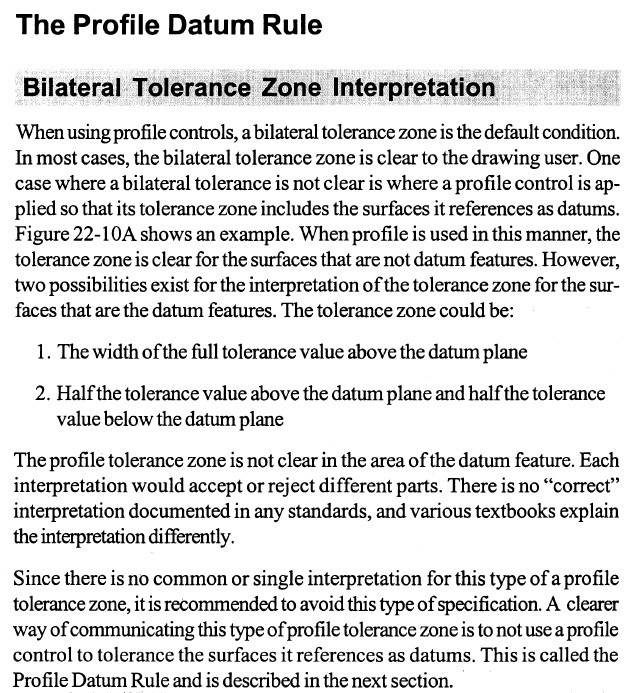-
1
- #1
dtmbiz
Aerospace
- Sep 23, 2008
- 292
The "GDT Question" thread was a bit long for me to advance with some side bar questions, so I started this thread because there are some concepts and premises presented in that thread that I do not understand where they originate from: Self-Referencing datums and tolerance halving.
Axym, Your comments in the referenced thread from an inspection perspective are appreciated .
Questions:
1 ASME Y14.5 Fig 8-14 thru 8-16 show examples of profile control relative to coplanar surfaces that are addressed in the referenced thread. These examples don’t appear to me to accept the premise that a profile all-around symbol would include datums (if the datums had been planar surfaces vs center planes). To the contrary I can’t find a figure that does include datums. If datums are in the profile fig’s, then the “between symbol” is used to clarify. Can someone direct me to a place in ASME Y14.5 that self-referencing datums are used as a legal concept?
2 What makes “halving” a consequence (referenced thread)? Is it the datum simulator?
3 Where are the perpendicular controls for datum feature B to datum feature C?
4 It appears that the referenced thread examples show that the datum feature B and datum feature C profile tolerances are perpendicular to each other. What makes that true in this example?
5 I don’t see anywhere in ASME Y14.5 where a tolerance in a profile FCF is “halved” by some circumstance or situation, where can I find it?
ASME Y14.5 2009:
Comment:
What appeared to be a simple profile callout for a rectangular block actually wasn’t clear for intent (IMO) because the fundamentals of selecting datums and then applying controls to those datums is an appropriate sequence per DRF wasn’t included. (E.g. (controls/qualifying) Primary (Form was shown in thread fig.), Secondary to Primary (Orientation), Tertiary to Primary, Secondary (Orientation)

